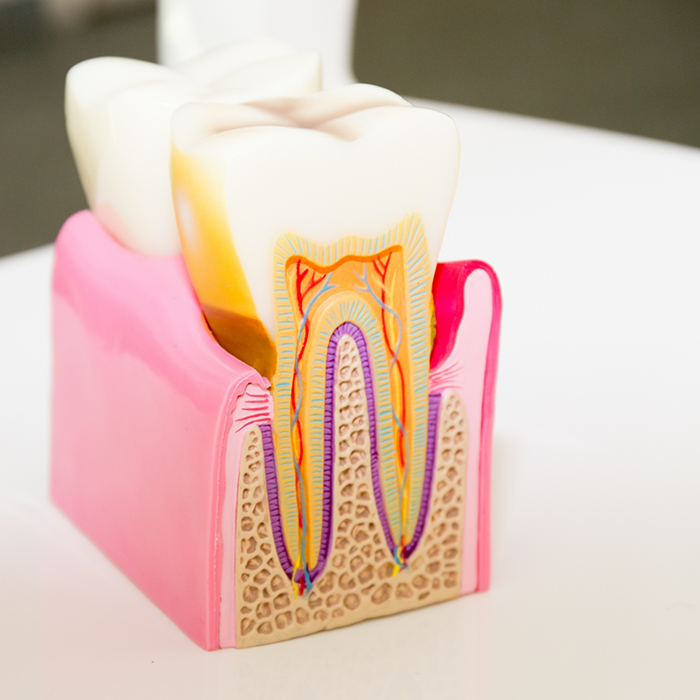Root Canal Treatment Sterling Heights
Getting to the Bottom of Your Tooth Pain
Root canal therapy is needed when the nerve of a tooth is affected by decay or infection. In order to save the tooth, the pulp (the living tissue inside the tooth), nerves, bacteria, and any decay are removed, and the resulting space is filled with special, medicated dental materials that restore the tooth to its full function.
Many patients believe that removing a tooth that has problems is the solution, but what is not realized is that extracting (pulling) a tooth will ultimately be more costly and cause significant problems for adjacent teeth. Root canal treatment in Sterling Heights is highly successful and usually lasts a lifetime, although on occasion, a tooth will have to be retreated due to new infections.
Why Choose Dynamic Dental of Sterling Heights for Root Canal Treatment?
- Skilled Dentist with Several Years of Experience
- Emergency Appointments Available
- Beautiful, Natural-Looking Crown Restorations
What Symptoms Mean I Might Need a Root Canal?

A root canal isn’t something that you should put off, ever. If you’re experiencing any of these symptoms, the issue is unlikely to resolve itself without professional intervention:
- An abscess (or pimple) on the gums.
- Sensitivity to hot and cold.
- Severe toothache pain.
- Swelling and/or tenderness.
What Happens During a Root Canal?

An opening is made on top of the tooth, and a series of root canal files are placed into the opening, one at a time, removing the pulp, nerve tissue, and bacteria. If tooth decay is present, it will also be removed with special dental instruments. Once the tooth is thoroughly cleaned, it will be sealed with a permanent filling; if additional appointments are needed, a temporary filling will be placed instead.
At the next appointment, usually a week later, the roots and the inside cavity of the tooth will be filled and sealed with special dental materials. A filling will be placed to cover the opening on top of the tooth. In addition, all teeth that have root canal treatment should have a crown (cap) placed. This will protect the tooth and prevent it from breaking, as well as restore it to its full function. After treatment, your tooth may still be sensitive, but this will subside as the inflammation diminishes and the tooth heals.

